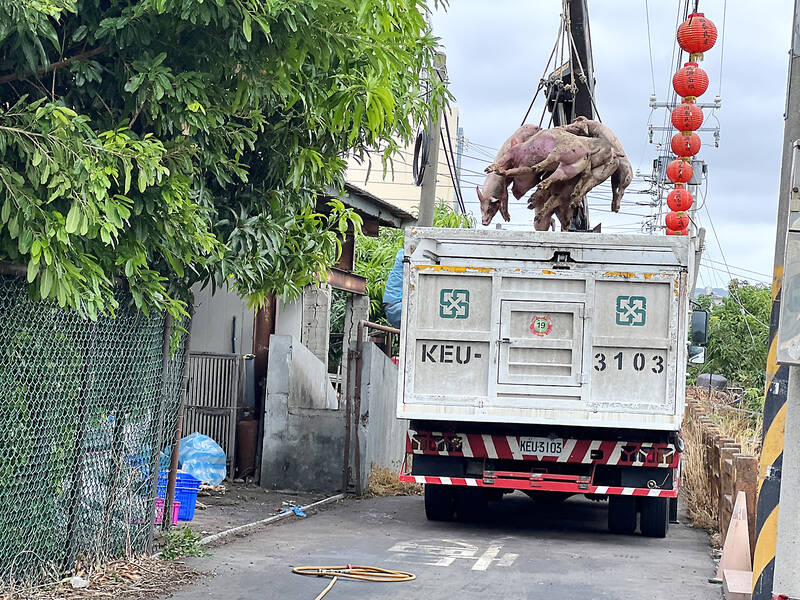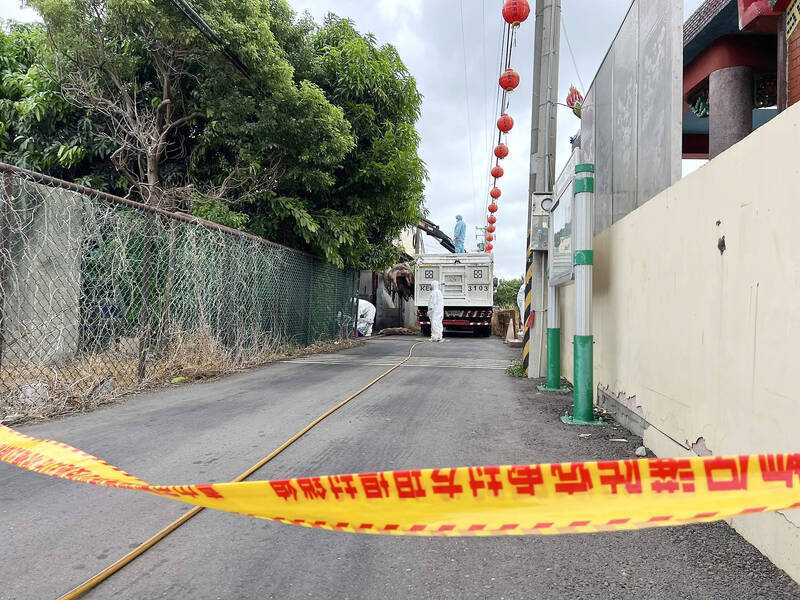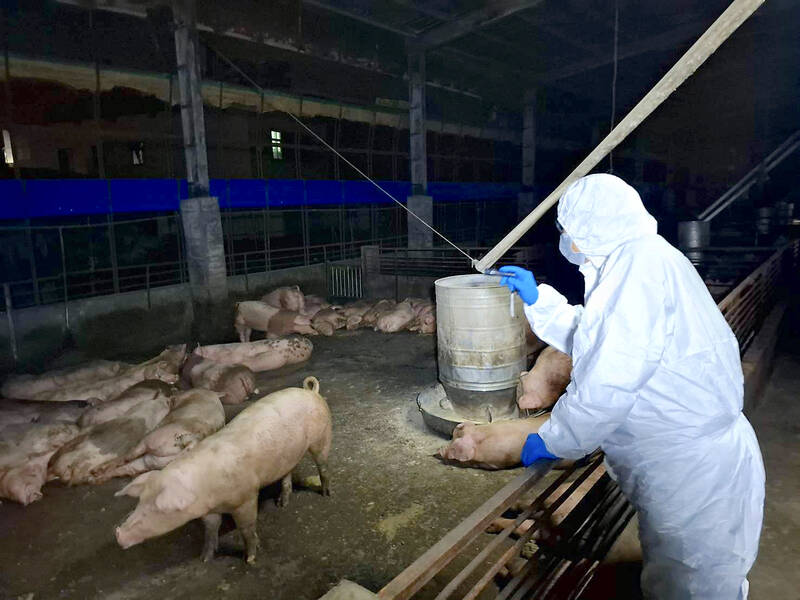“‘Medicine and civilization’ were two of the main themes that the Japanese colonial government repeatedly used to persuade Taiwanese to accept colonization,” wrote academic Liu Shi-yung (劉士永) in a chapter on public health under the Japanese. The new government led by Goto Shimpei viewed Taiwan and the Taiwanese as unsanitary, sources of infection and disease, in need of a civilized hand. Taiwan’s location in the tropics was emphasized, making it an exotic site distant from Japan, requiring the introduction of modern ideas of governance and disease control.
The Japanese made great progress in battling disease. Malaria was reduced. Dengue was attacked, but broke out island-wide in 1915, 1931 and 1942. Thereafter, according to the Centers for Disease Control (CDC) data, the disease went dormant for four decades until a major outbreak in 1981 in Pingtung County. This was followed by the 1987-88 outbreak in Kaohsiung, and further outbreaks in the 1990s across Taiwan. In 2015 the island experienced 43,000 cases in a major outbreak, with 228 deaths. The disease spiked again in 2023 with over 26,000 cases as Taiwan’s neighbors also experienced problems with dengue.
Taiwan has been well-ordered for so long that residents often forget they are living on a subtropical island with all the attendant disease risks and potentials.

Photo: Liao Yao-tung, Taipei Times
For example, pig processing and transportation were halted for five days last week after African swine fever was confirmed at a hog farm in Taichung’s Wuci District (梧棲). The disease does not affect humans, but it is lethal to pigs. The government assured the public that it remained vigilant and its response was immediate and sweeping, with inspections on farms associated with the affected hog farm, and decontamination of vehicles and affected sites. The disease is tough to eradicate. The authorities said that “Not only is it highly contagious, but it can survive for about 100 days in refrigerated pork, up to 1,000 days in frozen pork and one month inside pigpens.” It likely entered the pigs’ food supply in waste from smuggled pork.
However, as a Global Taiwan Institute piece from 2021 titled “Meat Product Smuggling and African Swine Fever: Taiwan’s Next Crisis?” noted, because pork prices in Taiwan are high, demand for cheaper smuggled pork is strong. Inspection of imports for diseases is usually carried out by dogs, but handlers and their animals are often lacking.
Also last week, two Kinmen residents who had traveled to China’s Guangdong Province, currently undergoing an outbreak of chikungunya fever, were diagnosed with the disease, the CDC announced on Tuesday. Chikungunya is spread by mosquitoes, and has been resident in the Philippines since the 1950s. It’s just a matter of time before it establishes itself here. It is a severe threat to infants, but fortunately we don’t have many of those.

Photo courtesy of reader
Zika, a flavivirus like dengue, has occurred in Singapore and Malaysia, and a 2021 serological study found “evidence of widespread ZIKV exposure across the Philippines.” China had its first case this year.
In fact, Taiwan has done a bang up job in keeping diseases out despite the numerous constraints on its operations and the nearness of the threats. How many readers recall the mpox outbreak that began in June of 2022? The CDC took effective action and mpox was suppressed last year and never became a major problem. Taiwan accomplishes its successes with a tiny workforce: the CDC had just 797 employees at the end of 2023. Further, Taiwan is not a member of certain international health organizations, such as the WHO, one way that China’s oppression of Taiwan translates into dead Taiwanese.
People often argue for peaceful annexation of Taiwan to the People’s Republic of China (PRC), in order to save lives lost in war. That’s an understandable viewpoint, often rebutted by pointing out that occupation, with its concentration camps, executions and general immiseration of the populace, will also take numerous lives.

Photo courtesy of Taichung City Government
Fewer people think about what “occupation” means in terms of human exchange. A famed 1995 article in the US Army War College journal Parameters, “Force Requirements in Stability Operations” by James Quinlivan, observed that population size is the most useful base for calculating the required occupation force. For every 1,000 people under occupation in an area with an active insurgencies, 20 soldiers will be required to create the kind of stability necessary for daily routine to take place, he argues. Quinlivan instances the Ulster troubles and the 1952 Malayan Emergency as examples of forces with roughly that ratio of troops to population.
Depending on the level of resistance, the PRC will have to keep 10-20 troops here per 1,000 people, anywhere from well over 200,000 men, to well over 400,000. Quinlivan wrote of units deployed for occupation (which requires a different skill set): “if units have only a little more than a year for a cycle of retraining to original role, maintaining skills within their original role, and then training to special deployment tasks, it seems unlikely they will have time to progress to highly integrated combined arms training.”
One deterrent to PRC planners envisioning a Taiwan scenario face is the cost of occupation and its debilitating effects on the troops it must rotate through the occupation, which will leave them unfit for further aggression.
But where will these troops come from? Likely staged primarily from bases in southern China, which, as a moment’s research will make clear, still hosts numerous tropical diseases despite years of effective disease reduction. Many of these, like dengue or clonorchiasis (Chinese liver fluke) are already found in Taiwan. Others, like rabies, have largely been kept at arms length.
An amphibious operation followed by a lengthy occupation would be a health and ecological disaster. As hundreds of thousands of young males are rotated through the occupation force, they will bring diseases over from China in their bodies and in their food (like African swine fever, now endemic in China), likely spreading them at a time when our CDC is dysfunctional and the health system grossly overburdened from heavy wartime casualty loads and destruction of health infrastructure. Occupation troops, arrogant in their power, will also commandeer local health resources that should be going to Taiwanese.
A 2021 systematic review on the “military as an important pathogen transmitter” examined over 200 studies. It found that “multiple mechanisms drive disease transmission within military missions, bases and medical institutions, into civilian populations.” Every disease that is endemic or existing in the PRC, will be brought here by occupation troops.
Want a powerful argument against annexation with a strong, emotional ick factor? Start pointing this out.
Notes from Central Taiwan is a column written by long-term resident Michael Turton, who provides incisive commentary informed by three decades of living in and writing about his adoptive country. The views expressed here are his own.

Oct. 27 to Nov. 2 Over a breakfast of soymilk and fried dough costing less than NT$400, seven officials and engineers agreed on a NT$400 million plan — unaware that it would mark the beginning of Taiwan’s semiconductor empire. It was a cold February morning in 1974. Gathered at the unassuming shop were Economics minister Sun Yun-hsuan (孫運璿), director-general of Transportation and Communications Kao Yu-shu (高玉樹), Industrial Technology Research Institute (ITRI) president Wang Chao-chen (王兆振), Telecommunications Laboratories director Kang Pao-huang (康寶煌), Executive Yuan secretary-general Fei Hua (費驊), director-general of Telecommunications Fang Hsien-chi (方賢齊) and Radio Corporation of America (RCA) Laboratories director Pan

The classic warmth of a good old-fashioned izakaya beckons you in, all cozy nooks and dark wood finishes, as tables order a third round and waiters sling tapas-sized bites and assorted — sometimes unidentifiable — skewered meats. But there’s a romantic hush about this Ximending (西門町) hotspot, with cocktails savored, plating elegant and never rushed and daters and diners lit by candlelight and chandelier. Each chair is mismatched and the assorted tables appear to be the fanciest picks from a nearby flea market. A naked sewing mannequin stands in a dimly lit corner, adorned with antique mirrors and draped foliage
The consensus on the Chinese Nationalist Party (KMT) chair race is that Cheng Li-wun (鄭麗文) ran a populist, ideological back-to-basics campaign and soundly defeated former Taipei mayor Hau Lung-bin (郝龍斌), the candidate backed by the big institutional players. Cheng tapped into a wave of popular enthusiasm within the KMT, while the institutional players’ get-out-the-vote abilities fell flat, suggesting their power has weakened significantly. Yet, a closer look at the race paints a more complicated picture, raising questions about some analysts’ conclusions, including my own. TURNOUT Here is a surprising statistic: Turnout was 130,678, or 39.46 percent of the 331,145 eligible party

The election of Cheng Li-wun (鄭麗文) as chair of the Chinese Nationalist Party (KMT) marked a triumphant return of pride in the “Chinese” in the party name. Cheng wants Taiwanese to be proud to call themselves Chinese again. The unambiguous winner was a return to the KMT ideology that formed in the early 2000s under then chairman Lien Chan (連戰) and president Ma Ying-jeou (馬英九) put into practice as far as he could, until ultimately thwarted by hundreds of thousands of protestors thronging the streets in what became known as the Sunflower movement in 2014. Cheng is an unambiguous Chinese ethnonationalist,